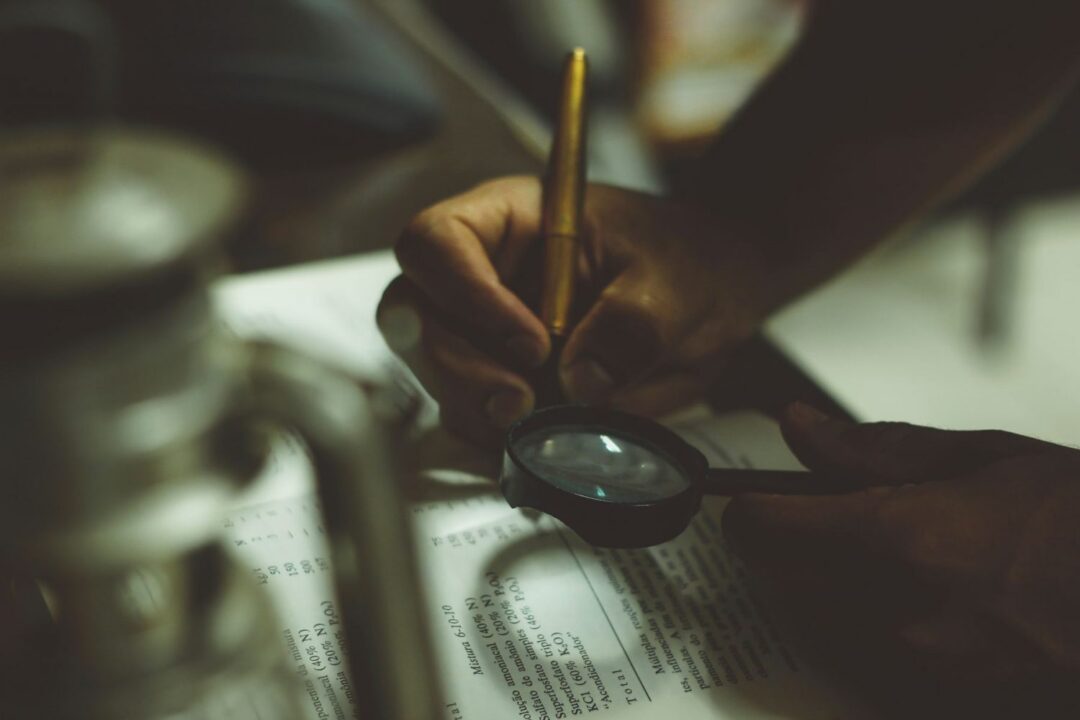Power to the pupils: How we put student voice at the heart of learning

Student voice has always been promoted and celebrated at The Romsey School. We regularly review practices that we operate at whole-school level and, in 2016, I decided to develop our student voice to increase pupils’ sense of belonging. I felt this was important as I wanted our student voice to move away from ‘tokenism’ and towards ‘learner empowerment’ (Futurelab Report, 2006).
Our vision
In January 2017, we created a vision for our student body to move them from contributing to school life in committees to proactive behaviours that make a sustained difference to learning. The vision was: ’For students to be empowered to enhance the quality of their learning experiences at The Romsey School and to assist in the development of positive learning behaviours with our whole student body.’
We wanted to:
- Develop proactive behaviours that make a sustained difference to learning
- Develop student’s metacognition so that they are more proactive in their learning and lives
- Improve their confidence
- Allow them to make an impact on their school, empowering them to be ‘agents of change’ in their future lives
- Develop their leadership skills
- Prepare them for prefect status.
We hoped the impact these students would have on the school would be to:
- Shift our school culture so the ethos is that we are ‘doing with’ pupils rather than ‘to’
- Help to develop the school’s teaching and learning provision
- Help us to become a research-active school.
Our research
I began researching student empowerment. Berger’s (2003) ethic of demanding excellence particularly resonated with me. I really liked his ideas about helping students improve their work through effective questioning and feedback, particularly his example of Austin’s Butterfly, where Austin re-drafted his picture of a butterfly six times to make a picture that was years ahead of his age. This tied into Hattie’s (2011) ideas on the importance of feedback, sharing success criteria and modelling examples to students so that they know how to improve their learning.
Likewise Creasy’s (2014) discussion about the importance of involving pupils in the decision-making for homework – so they feel that they own it and are therefore more likely to complete it to a good standard – was important. The FutureLab Report (2006) on learner voice had some really interesting insights into empowering learners, rather than just being tokenistic. Students need to create their own agendas and tell us how they envision teaching and learning in their lessons to increase their participation and help the teachers become even better by working in union. I also used the EEF website widely, particularly their work on metacognition (which we call the ‘Habits of Mind’) and the use of feedback to improve student learning.
Student Leaders of Learning
This research, along with our vision, led to the creation of a small group of pupils from key stage 3 who were branded as Student Leaders of Learning (SLLs). We focused on key stage 3 (KS3) because it was a good investment – we could train pupils in years 7 to 9 and then use them as SLLs for another two to four years. Also, the training sessions we wanted to deliver would involve the pupils coming out of some lessons and so we also felt that staff would be happier for us to remove KS3 students from lessons, rather than pupils studying for their GCSEs.
It was no easy task to become a SLL. The students first had to be nominated by their Head of Year. I was concerned that some traditional models of student voice, where the most popular student from a tutor group is elected to represent the students, may empower only the most articulate and confident students. I wanted to represent a broad range of students, including those who receive Pupil PremiumAdditional funding for publicly funded schools in England to raise the attainment of disadvantaged pupils of all abilities funding and students with SEND.
Once the students were nominated, they had to complete an application form, comprising of five questions, such as as one thing they would like to change about how they learn at Romsey. The images below (1-6) illustrate these questions, along with some of our student responses from a range of students, including those who receive Pupil Premium funding and students with SEND, demonstrating what all students are capable of if given the chance to excel.
Images of student responses
We launched the programme to the pupils that the heads of year had recommended – any student from this list who completed an application and submitted it by the deadline was selected to become a SLL. In the end, we had 40 SLLs in total.
Putting their plans into action
I used the students’ applications to group the SLLs into six different research teams. This grouping allowed the SLLs the opportunity to work with students from other year groups on a topic that they all wanted to change in the school (as demonstrated in their applications). These teams mirrored our School Action Plan and the Performance Development Teams that staff had been placed into. Each team focused on one area of research, or ‘spiral’. These included:
- Effective Learning
- Literacy and Challenge
- Modelling Learning
- Feedback and Assessment
- Challenge in Lessons
- Focused Learning.
There were a series of meetings to start the project. Most importantly, all SLLs received some initial training by me to help them understand our style of leadership. I felt it was important to teach pupils to be respectful of staff and of their experience and professionalism – I didn’t want our staff feeling undermined or judged by our students, nor did we want our students to think that they should be doing this.
We also introduced SLA (Student Leadership Accreditation) to the team. This is a scheme developed by SSAT, a network of secondary schools, to formally recognise students’ leadership skills by getting them to provide a portfolio and complete a self-assessment (among other tasks). This helped the students realise the importance of the job in hand and the national accreditation they could work towards.
The SLLs had a one-hour lesson, supported by me, to start researching their spiral. They then had six weeks to research independently in their groups. The training session was delivered during a lesson in school and then pupils had to complete their research spirals in their own time.
The starting point for each SLL research sub-group was to help to construct the School Action Plan for Teaching and Learning for 2017-18. This element was given special mention when we were visited by OfstedThe Office for Standards in Education, Children’s Services and Skills – a non-ministerial department responsible for inspecting and regulating services that care for children and young people, and services providing education and skills in June 2017.
Resources to download
SSL Launch presentation Presentations for sessions 2 and 3
Having seen the school action plan, students then researched their area of development. This included them covering the following guided research (or ‘spiral of inquiry’):
- What is your group’s shared vision?
- What should be changed to make teaching and learning even better at The Romsey School?
- Why does this change need to happen?
- What evidence have you found to support this?
- How will this change come about? What will you do to lead this?
Having established their vision, the SLLs researched their area and conducted surveys and questionnaires with staff and students to gauge current perception and help them develop change. They had to propose a tangible, evidence-informed change that they would like to see in the school, for example, one group challenged our marking policy.
The group looked at research on feedback to improve student progress. Their key finding, which came from Wiliam (2011), was that feedback should be given by the teacher on the best work the student is capable of. They also found, from Hattie (2011), that written feedback should be given after a student has had a long process of oral feedback. It was interesting because the SLLs, rather than read their books, accessed their research and key findings from YouTube videos that both educational researchers have produced. The suggestions the SLL came up with were that oral feedback could come from teacher questioning, modelling work, setting tasks carefully (scaffoldingProgressively introducing students to new concepts to support their learning) and planning careful drafting by the pupils.
Other groups covered a wide range of topics including feedback and specific targets, and digital learning (wanting to change our use of a moodle system to Google Classrooms).
After consultation with the school’s Senior Leadership Team, I felt it was appropriate for all the SLLs to meet with and present their ideas to our governors’ Teaching, Learning and Assessment (TL&A) Committee. We were extremely impressed by the professionalism and insight that the SLL demonstrated during this phase. The Chair of the TL&A Committee wrote some positive feedback, to Colm McKavanagh (Headteacher) and Annie Eagle (Deputy Head), which we shared with our SLLs.
The SLLs at work
Next Steps
After the presentation, some members of the SLL group presented their research to our middle leaders in March 2018. An impressive 62.5% of our middle leaders felt they could name an example of a new idea/intervention that they would trial within their departments because of the SLL’s work. These ranged from continuing to allow students the opportunity to reflect on their work, planning lessons that incorporate active learning strategies and the importance of targeting specific pieces of work to provide feedback on rather than marking everything. The presentations were positively received with some comments from middle leaders, including:
‘Really lovely to see pupils present to staff, they did extremely well.’
‘I think it would be really good if, as a future evolution, SLLs worked with departments to identify what works for them in the context of each individual department.’
All SLL teams have written their research findings into a poster – a task all teaching staff also complete for their performance development reviews. These are currently in the process of being collated to create a journal highlighting Romsey School’s Action Research. Some of our SLLs have also had the opportunity to find more out about teaching via our local Teaching School.
We are now planning the whole school action plan for 2018-19. Our cultural shift to increase student voice has inevitably seen our SLLs co-plan next year’s action plan with the whole SLT. We are really proud of our SLLs as they have begun to implement real change within our school community.
Anecdotally, we are convinced that this group of pupils are much more motivated to succeed at school than they were a year ago as they feel like they are making a real difference. Since the start of this project I have been monitoring students’ attitude to learning, attendance and achievement data. The SLL have seen an increase in their attitude towards learning (measured by the attitude level staff gave them in their autumn term report for 2017 compared with their summer term report in 2018). More details of our attitude grading system can be found on our policy (pages 7 and 8).
Their attendance levels have also improved. From the academic year 2016-17 (at launch of the SLL project) to 2017-18, SLL attendance figures increased by 0.4 percentage points overall, while Pupil Premium SLL attendance increased by 2.14 percentage points. In comparison, whole school attendance fell by 0.26 percentage points during this time, and Pupil Premium attendance saw a 0.99 percentage point decrease.
While the SLL programme cannot claim to be the sole cause for the increases, it should be noted that the children who have been part of the programme have, on average, increased their attendance while the whole cohort of pupils have seen decreases in attendance. Our pastoral team is working hard to ensure this rises again over the next academic year. Staff are taking a strategic outlook with pupils and working even more closely with parents to ensure pupils and parents are aware of what they need to do to help improve their attendance.
We are now recruiting for a new round of SLL and have been asked by many students whether they could have the opportunity to join the programme as the students that have been a SLL for the last year have shown that they have enjoyed the ‘learner empowerment’ (Futurelab Report, 2006) I set out to provide them.
This article was published in December 2018 and reflects the terminology and understanding of research and evidence in use at the time. Some terms and conclusions may no longer align with current standards. We encourage readers to approach the content with an understanding of this context.
References
- Berger, R. (2003), An Ethic of Excellence: Building a Culture of Craftsmanship with Students. Heinemann Educational Books, U.S.
- Creasy, M. (2014), Unhomework: How to Get the Most Out of Homework without Really Setting It. Independent Thinking Press
- Rudd, T., Colligan, F., Naik, R. (2006) Learner Voice. Futurelab
- Hattie, J. (2011), Visible Learning for Teachers: Maximizing Impact on Learning. Routledge
- Wiliam, D. (2011), Embedded Formative Assessment. Solution Tree Press


















